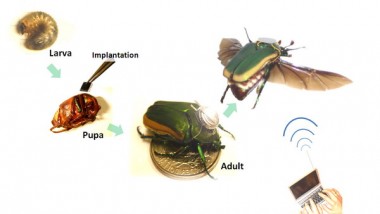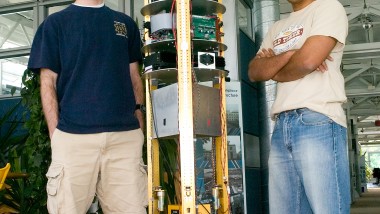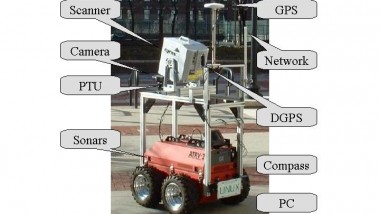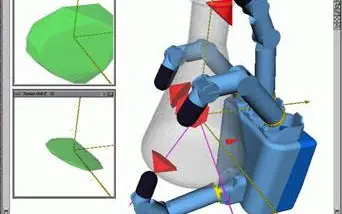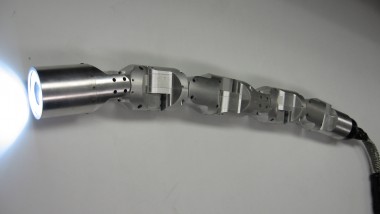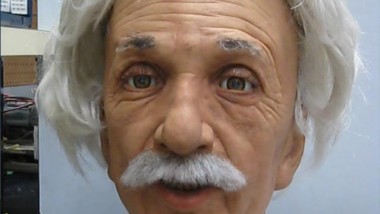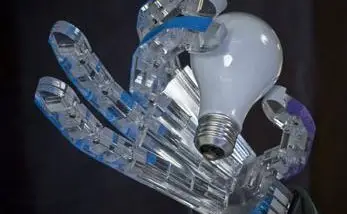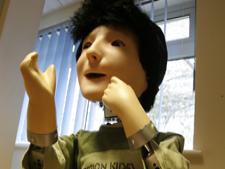Researchers at the University of California at Berkeley have successfully controlled the movements of beetles by delivering jolts of electricity directly to the insects’ brains and wing muscles. A wireless receiver, microcontroller, and six electrodes – collectively about the size ...
The Ballbot Robot
Researchers at Carnegie Mellon University in Pittsburgh, Pennsylvania have developed a new robot that balances and moves on a base composes of a single large ball. Called Ballbot, the robot is approximately as tall as a person and looks very ...
The AVENUE Urban Robot
Researchers at Columbia University in New York City have developed an autonomous robot capable of exploring urban areas and creating site models based on imaging and other collected data with little or no human interaction. Such models, currently created by ...
Robotic Hands Modeled on Real Joints
Researchers at Columbia University in New York City are working on new robotic hands modeled after real human hands. Instead of allowing full freedom of each joint, the new robotic controller attempts to build in the same type of interdependence ...
Robotic Snakes
Researchers at Carnegie Mellon University’s School of Computer Science have recently developed several models of robotic snakes. Nicknamed ‘snakebots’, these were shown to maneuver with surprising similarity to real, living snakes. Already the technology has attracted several potential customers and ...
Einstein’s Smile
Researchers from the University of California, San Diego have developed a very realistic Einstein robot that can smile and make facial expressions obtained by self-guided learning. The robot has machine learning qualities that allow for human-like facial expressions through artificial ...
Teaching Computers to Recognize Objects
Researchers of the European “Cognitive-Level Annotation using Latent Statistical Structure” (CLASS) project are developing technologies that could help computers to visually recognize specific objects, such as one’s glasses, and general classes of objects, such as a random car on the ...
Robotic Hand Operated By Compressed Air
Scientists at the Robotics and Mechanisms Laboratory (RoMeLa) at the College of Engineering at Virginia Tech have developed a robotic hand that can firmly hold objects as heavy as a can of food or as delicate as a raw egg, ...
Electronics-Free Robots
Researchers at the Shuji Hashimoto Laboratory in Tokyo, Japan have taken the first steps towards creating an electronics-free robot. They have developed a chemical gel capable of autonomous movements without any electrical inputs. Their robot combines polymers that change their ...
Robot Gets Artificial Skin
European researchers have collaborated to develop artificial skin for robots. The purpose of the project is to help investigate the manner in which robots can help children with autism learn about social interaction. This is the first time that such ...

